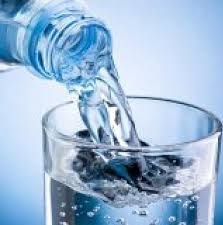 Whereas Turkish people drink a per capita of about 140 liters of water in PET bottles, and the neighboring countries of the Persian Gulf have a record of drinking more than 100 liters, the Iranian share is only 15 liters. One reason, would have been huge water purification facilities in very populated cities like Tehran, Mashhad, Shiraz, Isfahan and so, mostly utilized at the pre-revolution era which are now costly and not economically feasible for the national budget. But now, the alarms are sounding for lack of water and drought in Iran and a great demand for bottled water.
Whereas Turkish people drink a per capita of about 140 liters of water in PET bottles, and the neighboring countries of the Persian Gulf have a record of drinking more than 100 liters, the Iranian share is only 15 liters. One reason, would have been huge water purification facilities in very populated cities like Tehran, Mashhad, Shiraz, Isfahan and so, mostly utilized at the pre-revolution era which are now costly and not economically feasible for the national budget. But now, the alarms are sounding for lack of water and drought in Iran and a great demand for bottled water.
This is the outcome of an interview by Mr. Peyman Forouhar, the secretary of Iranian Bottled Water Association “IRBWA“, when he commented: “Only less than 3% of Iranians are consumers of bottled water and that’s because 95% of the population have access to tap water”. He added: “Some 95% of domestic bottled water industry is owned by private-run companies that were mostly set up in 2000s.”
“The emergence of bottled water in Iran dates back to 1971 when the first water bottling companies, Amolo and Damavand, started to operate. But the culture of drinking bottled water in Iran began to take root around a decade ago*. Business owners can easily remember the time supermarkets placed orders for bottled water every 20 days. Now they receive orders on a daily basis,” he added.
To set up a bottled water factory, Forouhar said, you need to invest at least 100 billion rials ($2.6 million).
Technology of these plants, even that of bottle making is largely imported from European countries. Half-liter bottles constitute close to 45% of bottled water production of Iranian factories.
“A four-member family will face a 700,000 Rials ($18.6) rise to its monthly expenditure if decides to switch to bottled water … Iranian people drink as little as 15 liters of bottled water annually compared with 35 liters of soft drinks, suggesting that our people have not noticed the importance of eating and drinking healthily,” he said.
Forouhar added that about 1-1.5 billion liters of water are bottled in Iran every year.
The renovation of the country’s aged drinking water infrastructure would carry a heavy price tag and take a long time. In addition, water leakage exceeds 30% of water in the supply system. These flaws would make bottled water the eventual replacement for tap water. Whereas, the Ministry of Industries, Mining and Trade has registered about 140 producers of bottled water, mostly in 2000s, now the “ITM” Ministry mostly insists on importation of high-tech machinery including; pre-form, blowing, filling and packaging systems that could also be job creating oriented, from European and Korea, which may be deserved for even 100% financing support.
- The first injection blow moulding machine was purchased from Nissei of Japan during an exhibition organized by the helps of “PIM” and direct influence of the CEO of this portal. Then, further 36 units imported from the so called Japanese company, and one from its rival: AOKI.












